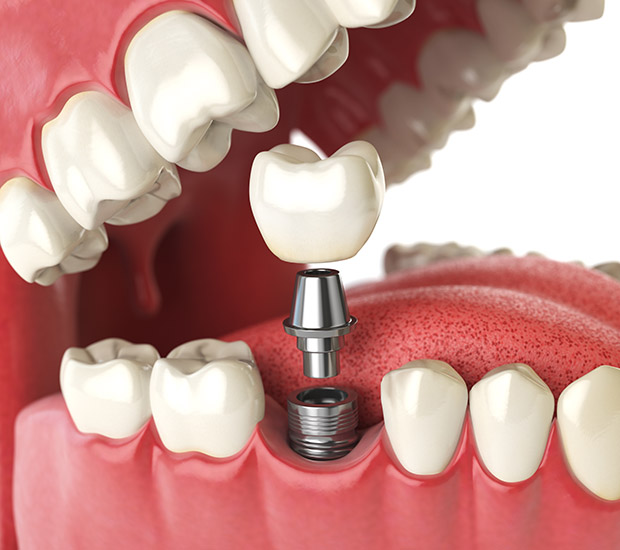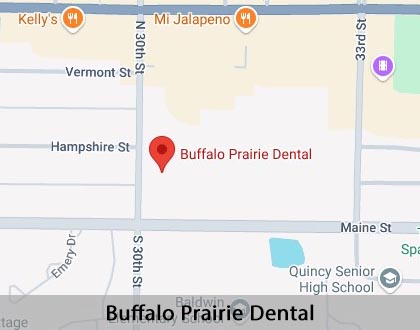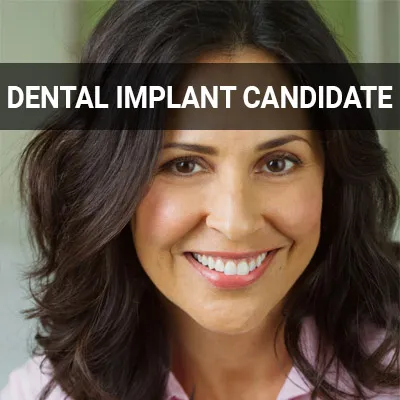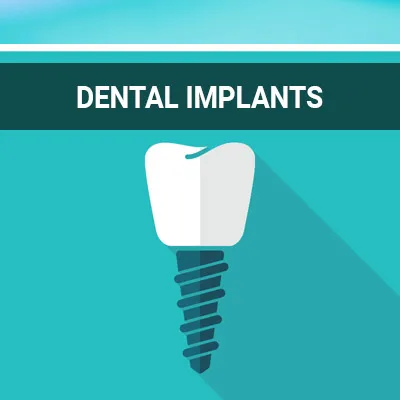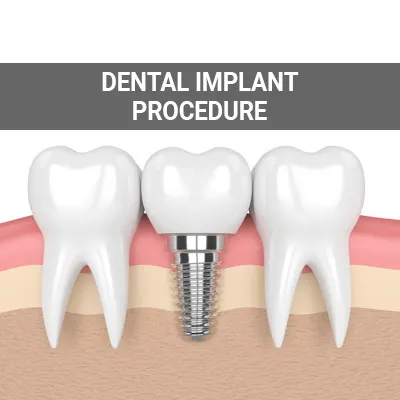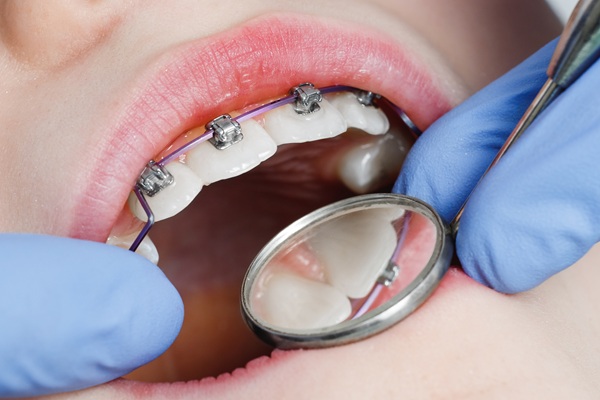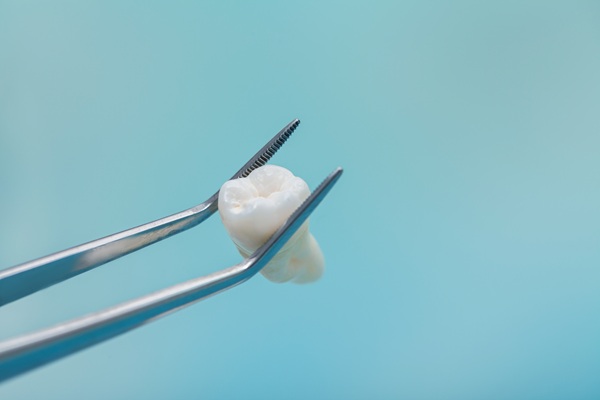Will I Need a Bone Graft for Dental Implants Quincy, IL
For people who have one or two missing teeth, dental implants are one of the most effective tooth restorations available. The implant needs support from a sufficiently thick mass of jawbone to support the dental restoration. A bone graft procedure involves transplanting bone to the implant site to make the jawbone thicker.
Bone graft procedures for dental implants are available at Buffalo Prairie Dental in Quincy and the surrounding area. Although bone grafting is an option, it is not always necessary. If you want to know if you would need a bone graft for dental implants, call our office at (217) 334-4312 to book a consultation with Buffalo Prairie Dental.
Bone Grafting for Dental Implants
The Centers for Disease Control and Prevention (CDC) states that as of 2023, nearly one in six adults aged 65 or older had lost all their teeth.. It is essential to restore lost bone in the jawbone through bone graft treatment after tooth loss. By completing this procedure, it can help to ensure a future implant and artificial tooth are properly supported long-term. A bone graft is a procedure to rebuild lost bone inside the jaw and recommended for patients who experience loss of bone density as a result of tooth loss.
Good candidates for a bone graft include those who are planning to undergo implants for missing teeth, those with tooth loss or gum disease, and those with bone loss. While the jaw and gums support natural teeth, the teeth also help to stimulate the jawbone. When tooth loss occurs, the supporting bone loses its primary purpose, and the process of resorption begins. This process occurs when the body absorbs calcium from the jawbone and distributes it to other areas of the body.
The lack of calcium in the jawbone makes it more difficult to support the implant. Resorption will also mean there is less bone that can bond with the titanium implant and help to solidify a firm hold of the implant. The purpose of a bone graft procedure is to rebuild bone density that may have become lost after the natural tooth becomes lost.
“It is essential to restore lost bone in the jawbone through bone graft treatment after tooth loss.”
When Bone Grafting Is Necessary
A dentist typically uses a thorough oral examination and X-rays to determine if a bone grafting procedure is necessary for dental implants. The jawbone commonly loses density as a result of unreplaced missing teeth. Bone is preserved by the pressure and stimulus caused by chewing, but when no tooth is present, the jawbone is no longer stimulated and starts to deteriorate. It is important to correct bone deterioration as it can cause more damaging complications, such as tooth loss. Dentists perform bone grafts using bone from the patient's body, usually from the back of the jawbone.
Signs That Indicate a Bone Graft Is Necessary
There are two primary signs the dentist may look for when determining if a bone graft is necessary. The first sign is the thickness of the bone inside the jaw. The second sign is how soft or hard the existing bone is. If the bone inside the jaw is thin, then we will likely recommend a bone graft. If the bone is soft, then a minor bone graft might be required to strengthen the bone and provide additional support for the implant. According to Mayo Clinic, periodontitis damages the soft tissue, destroying the bone that supports your teeth, so gum disease is a sign of potential bone loss as well.
“If the bone is soft, then a minor bone graft might be required to strengthen the bone and provide additional support for the implant.”
How Bone Grafting Works
There are different types of bone grafts, including autograft, allograft, xenograft, and an alloplastic graft. The majority of procedures use real bone, although a synthetic bone material is used for an alloplastic graft. The steps involved depend on the type of bone grafting procedure. It typically involves taking either natural bone or a synthetic bone material and placing it into the jawbone above the missing tooth through a minor surgical procedure. The bone must then heal and fuse with the existing bone in the area, which typically takes two to three months.
Bone grafting is a fairly common procedure. A 2016 study found that nearly half of 800 people with dental implants required a bone graft prior to implantation. A bone graft is beneficial for patients as it provides additional support to the dental implant. Otherwise, the dental implant placement process may have a higher risk of failure. The bone augmentation can improve the appearance, function, and oral health of the patient.
“It typically involves taking either natural bone or a synthetic bone material and placing it into the jawbone above the missing tooth through a minor surgical procedure.”
Check out what others are saying about our dental services on Yelp: Will I Need a Bone Graft for Dental Implants in Quincy, IL
What to Expect After the Procedure
Although patients differ in their condition, oral health status, and recovery, there are various ways to help the jaw heal faster. Bone grafting may result in swelling, bruising, and minor bleeding of the gums after the procedure. To recover as quickly as possible, stick to soft foods and avoid dark beverages or sugary drinks. Along with that, it is essential to practice good oral hygiene through a gentle brushing and flossing routine and using mouthwash.
We encourage patients to look for a qualified oral surgeon or implant specialist as they are most skilled at bone graft procedures. It is important that patients play an active role in their oral health and understand their treatments as well as who is performing them. As your dentist about their experience with bone grafting and how successful their treatments were. It may be a good idea to look at before-and-after testimonials and patient reviews online prior to scheduling a consultation.
“To recover as quickly as possible, stick to soft foods and avoid dark beverages or sugary drinks.”
Questions Answered on This Page
Q. When is bone grafting necessary?
Q. How does the bone grafting procedure work?
Q. What can I expect after a bone graft procedure?
Q. What are some procedures that help stimulate bone growth?
People Also Ask
Q. How are dental implants used to replace missing teeth?
Q. When should people seek an implant dentist?
Q. Is there anything patients can do to recover faster?
Q. How should someone prepare for dental implant surgery?
Q. What happens after the dental implant procedure?
Q. What can patients do to reduce their anxiety about receiving a dental implant?
Procedures That Improve Bone Growth
To accelerate bone healing, the dentist may recommend additional procedures, including platelet-rich plasma or bone morphogenetic protein placement.
Platelet-rich plasma: Platelets are a component of the blood and play roles like producing growth factors into wounds and formation of blood clots. The plasma has platelets in high concentration. When used for bone grafts, PRP can help encourage quicker healing and tissue regeneration for faster results.
Bone morphogenetic protein (BMP): This is a naturally occurring protein in the body that helps promote new bone growth. The material is synthesizable and can be used in bone augmentation and grafting treatments to increase jawbone mass. Using BMP removes the need to obtain bone graft material from external sources.
“To accelerate bone healing, the dentist may recommend additional procedures, including platelet-rich plasma or bone morphogenetic protein placement.”
Frequently Asked Questions About Bone Grafting
Q. What are the benefits of bone graft procedure?
A. With bone grafts, patients who may otherwise not be eligible for dental implants will be able to get dental implants. The procedure boosts the jawbone mass to make dental implant restoration successful over the years. After the jaw heals following a bone graft, it will be strong and stable to hold implant posts.
Q. What are the qualities of a good bone graft specialist?
A. It is important that you choose a bone graft specialist with the training and experience for performing the procedure. Preferably, the dentist should have a certification from the American Academy of Implant Dentistry. The procedure is more likely to be successful if handled by an experienced dentist.
Q. How do I know if the bone graft specialist has experience?
A. During your consultation with the dentist, you can ask for references and before and after pictures from previous procedures. You can also ask for an explanation about the With, including the risks, side effects, and medications. You can inquire about continuing education courses to be sure the dentist is up to date on new technologies, techniques, and medications.
Q. Can I get dental implants immediately after bone augmentation?
A. If there is adequate bone tissue around the implant, the dentist may place the implant during the bone augmentation procedure. With time, the bone augmentation will cause new bone to grow around the implant. If a significant part of the bone is missing, placing implants immediately after bone grafting is not possible or advisable.
Quality Dental Services Can Transform Your Smile
By visiting us as soon as possible, our team can help get you the professional treatment you need. Instead of waiting around and allowing the symptoms to get worse, we can provide you with treatment options.
Dental Implant Terminology
Call Us Today
We offer bone grafting for dental implants and help patients through the process. If you are interested in learning more about bone grafts as well as the implant process in general, then get in touch with us at 217-334-4312 today.
Helpful Related Links
- American Dental Association (ADA). Glossary of Dental Clinical Terms. 2024
- American Academy of Cosmetic Dentistry® (AACD). Home Page. 2024
- WebMD. WebMD’s Oral Care Guide. 2024
About our business and website security
- Buffalo Prairie Dental was established in 2019.
- We accept the following payment methods: American Express, Cash, Check, Discover, MasterCard, and Visa
- We serve patients from the following counties: Adams County, Brown County, Marion County and Lewis County
- We serve patients from the following cities: Quincy, West Quincy, Taylor, Payson, Camp Point, Mendon, Mt Sterling and La Grange
- National Provider Identifier Database (1750440632). View NPI Registry Information
- Norton Safe Web. View Details
- Trend Micro Site Safety Center. View Details
Back to top of Will I Need a Bone Graft for Dental Implants
